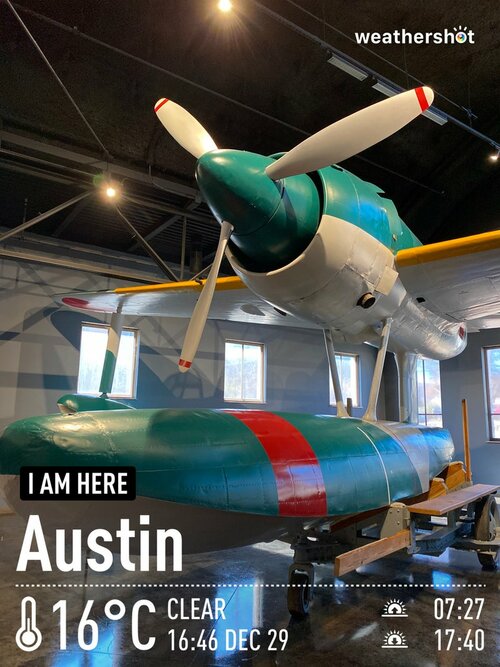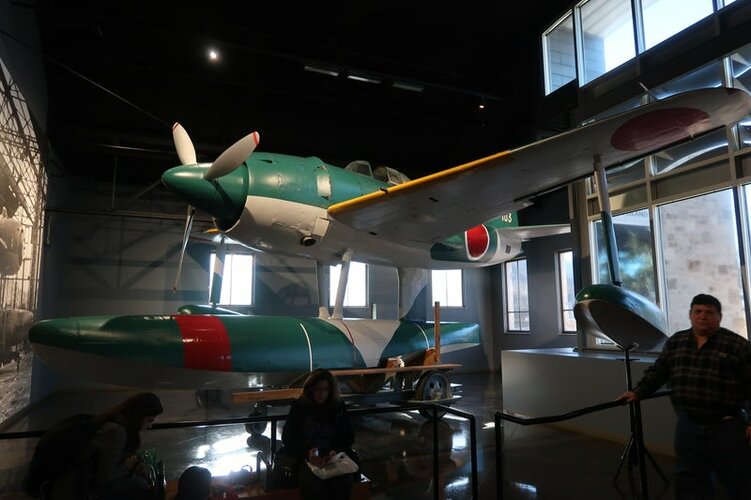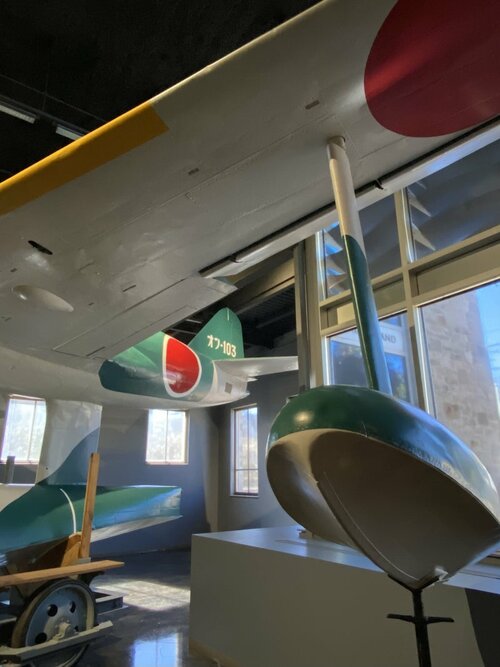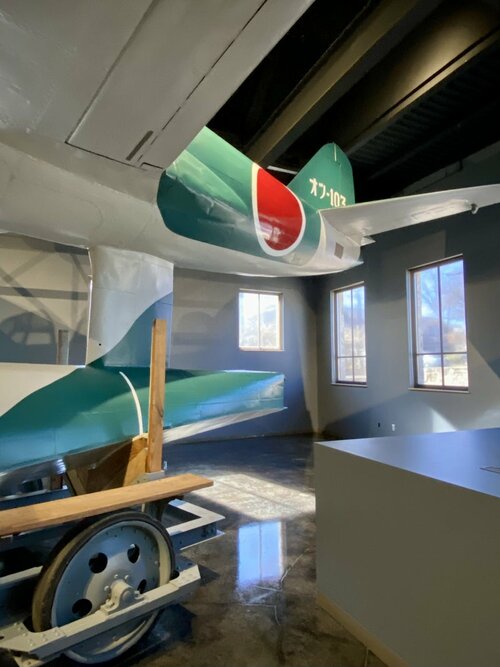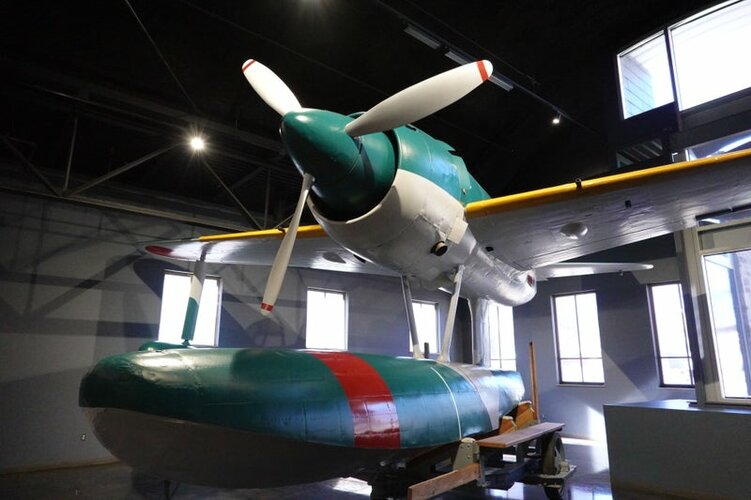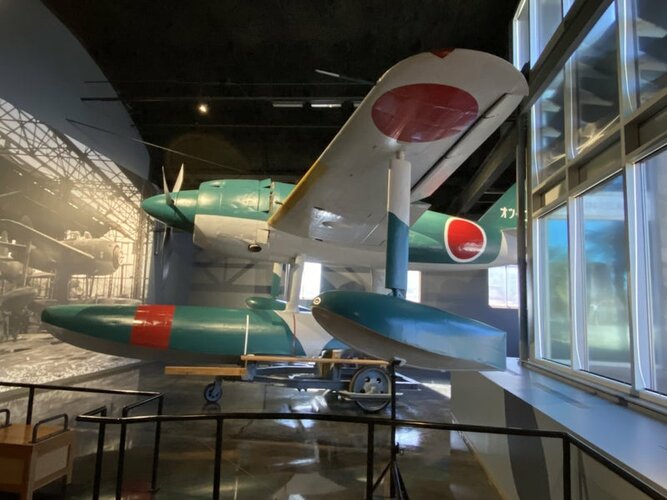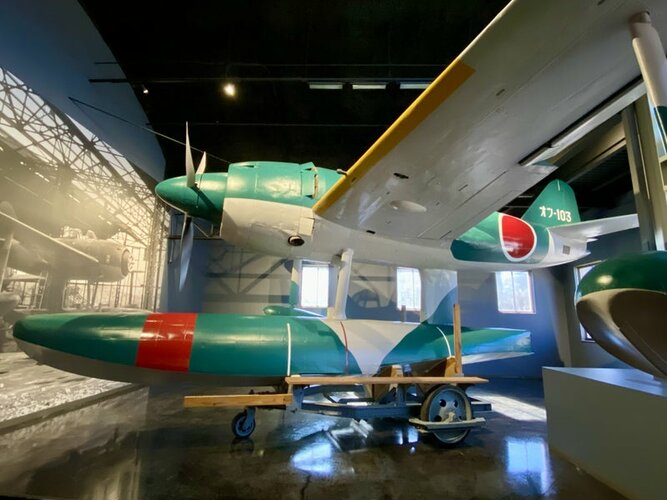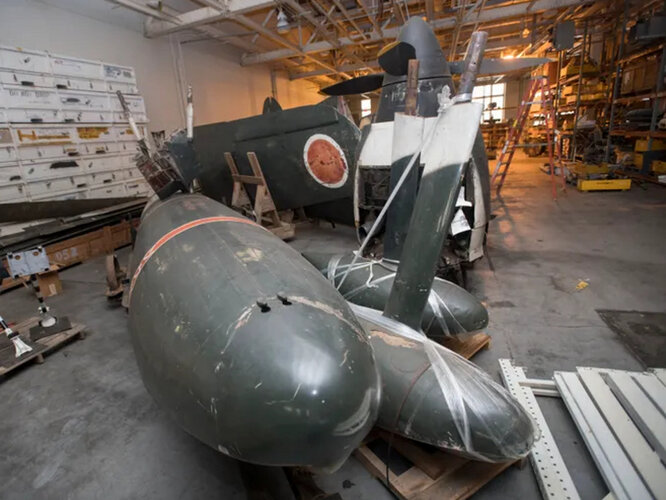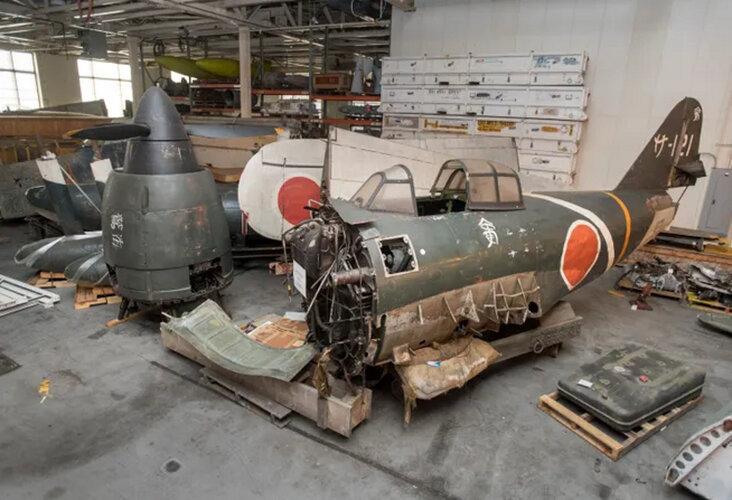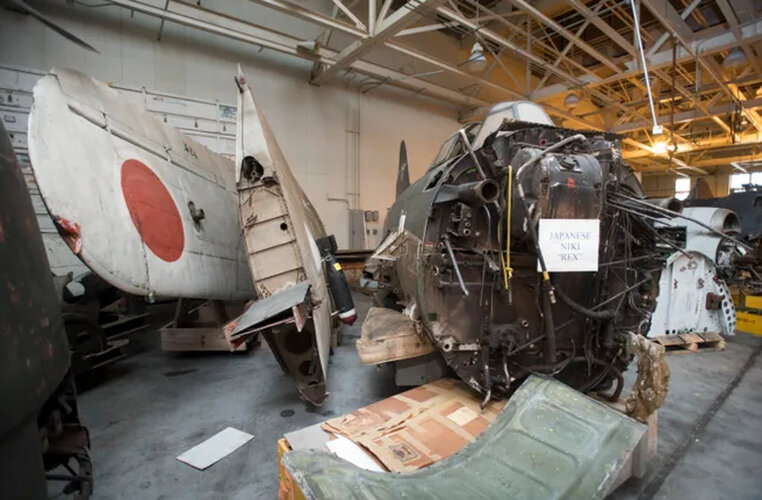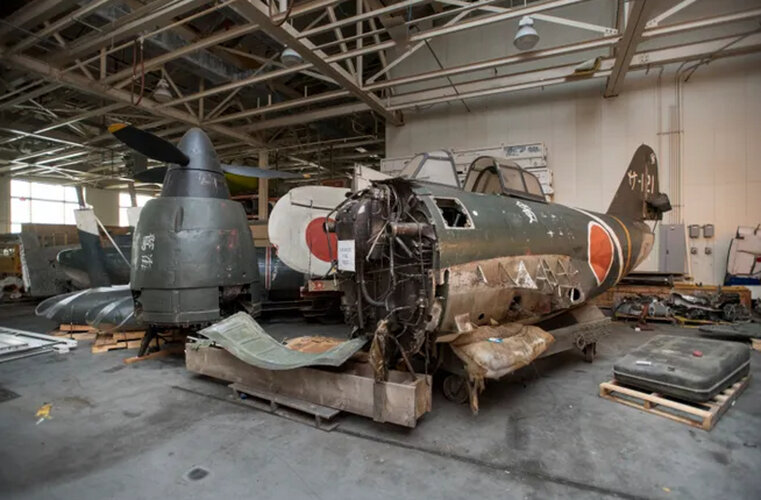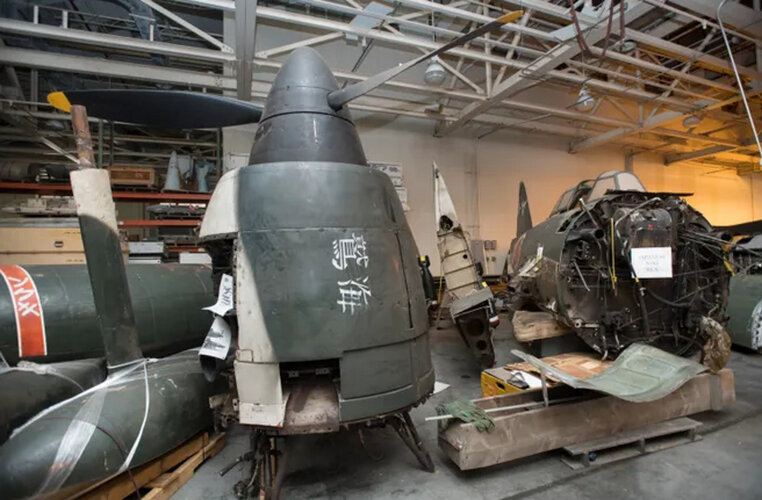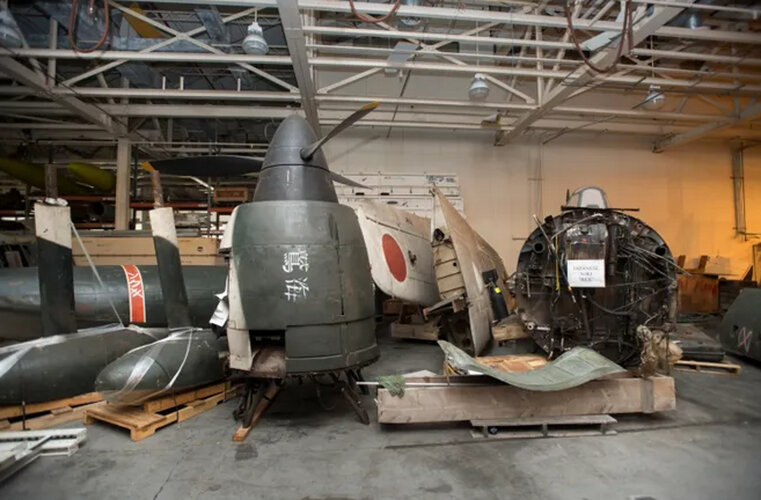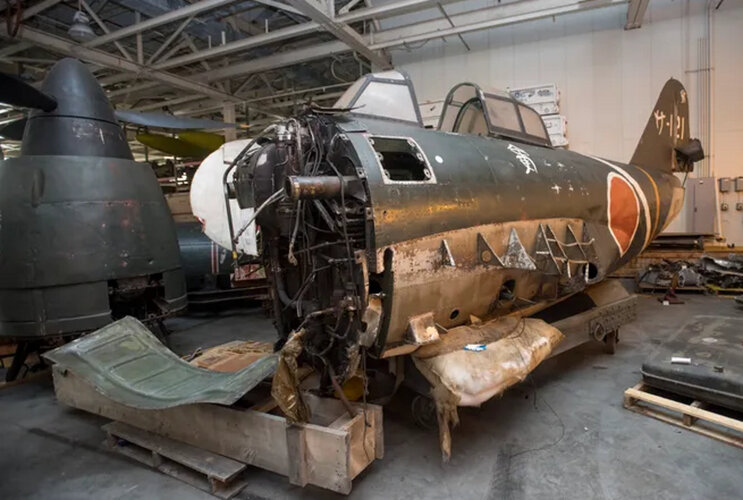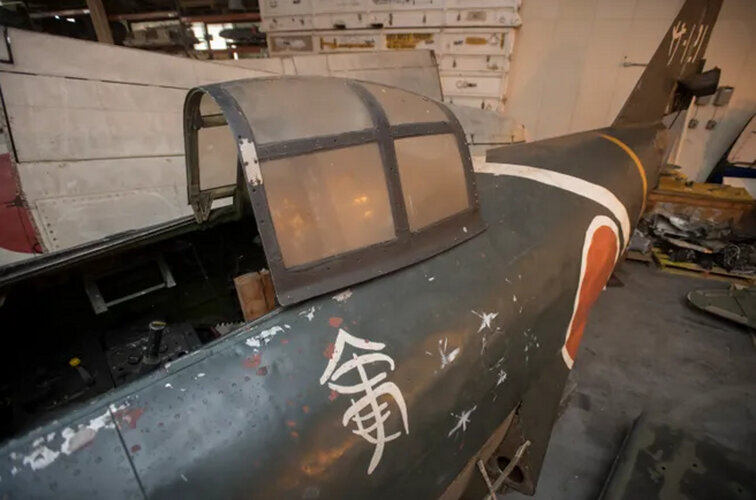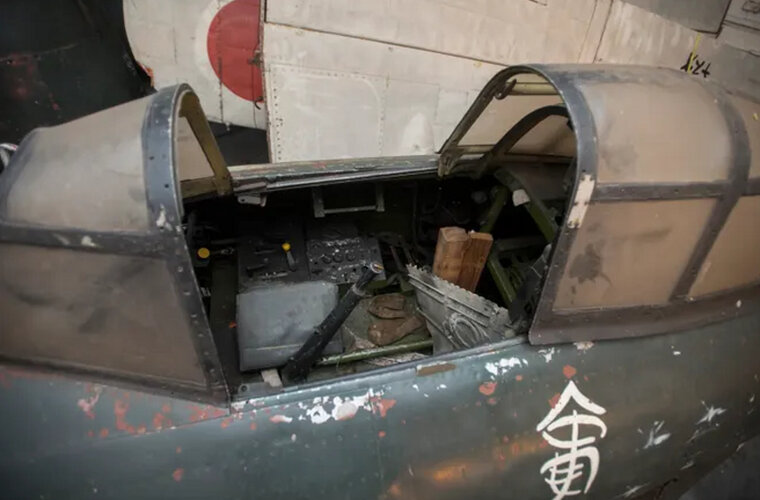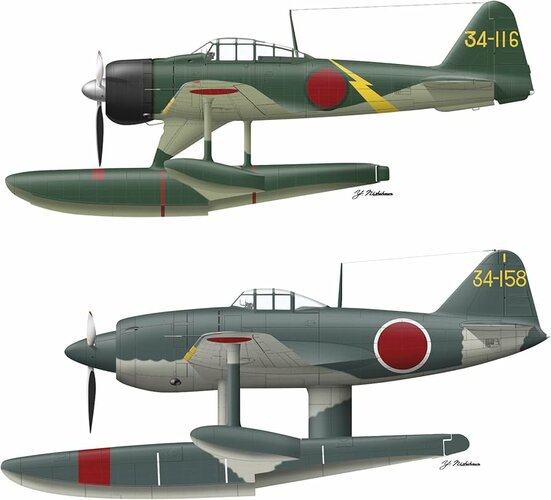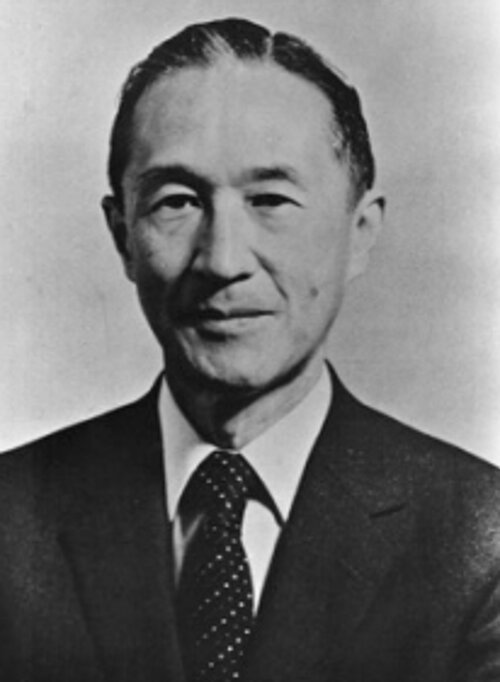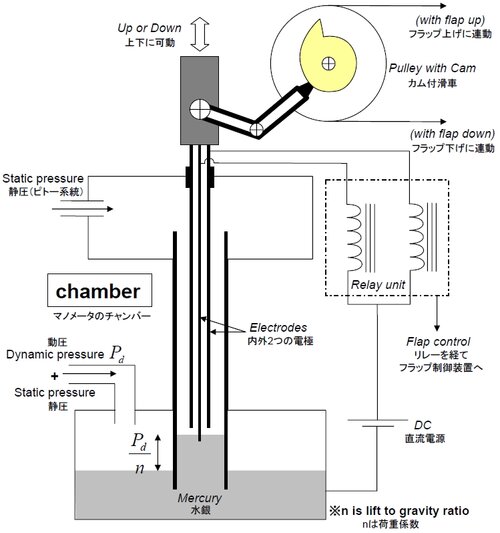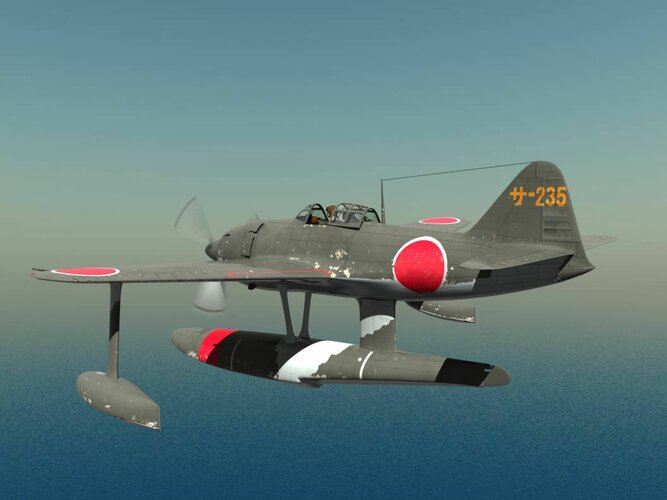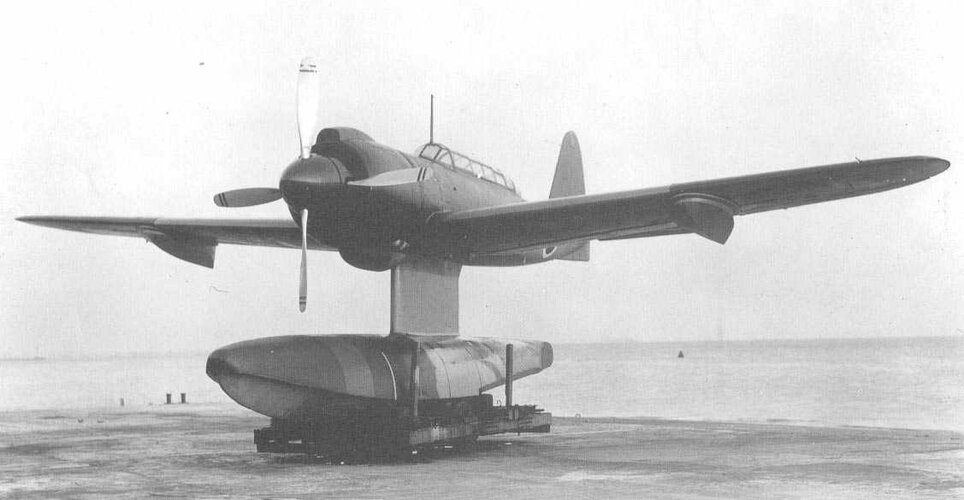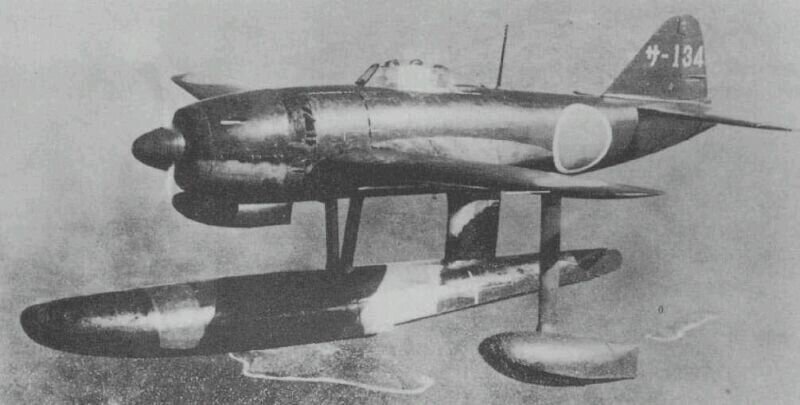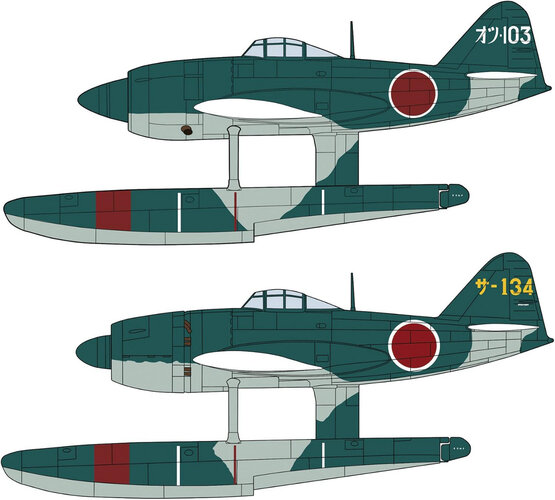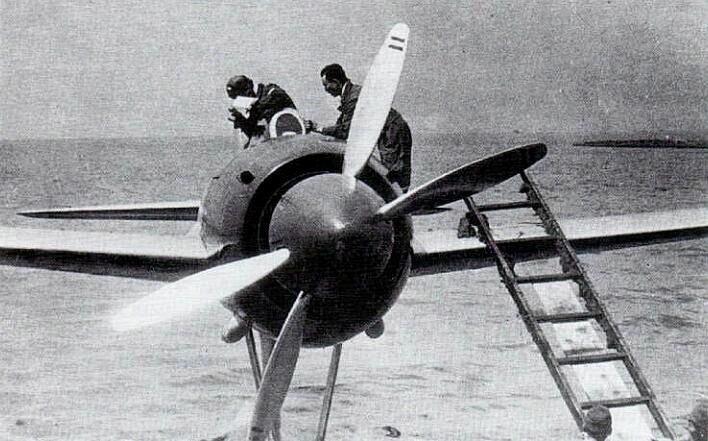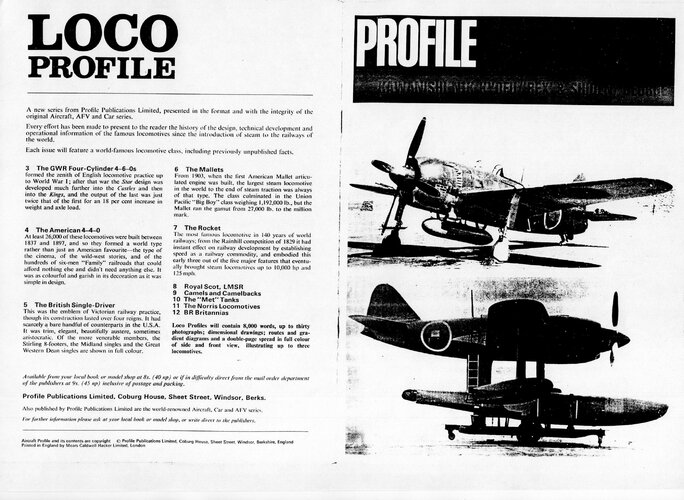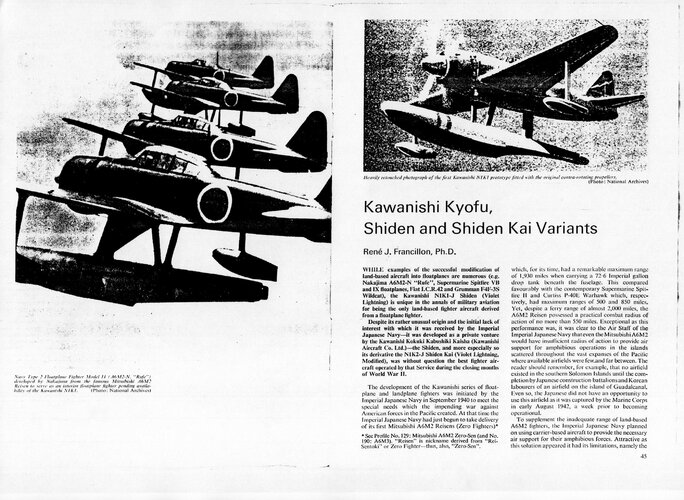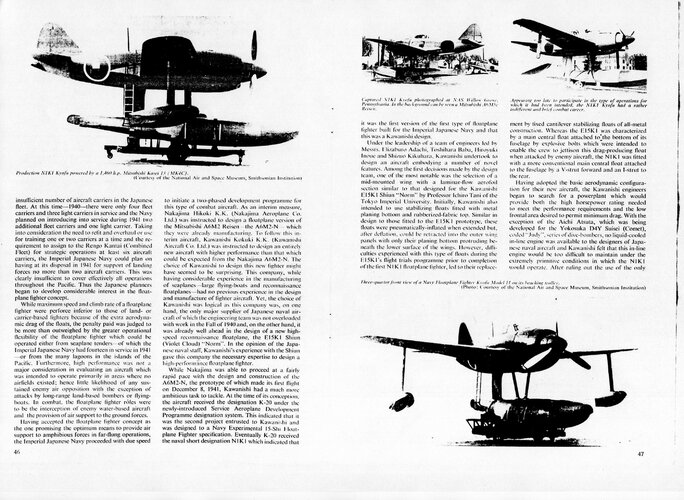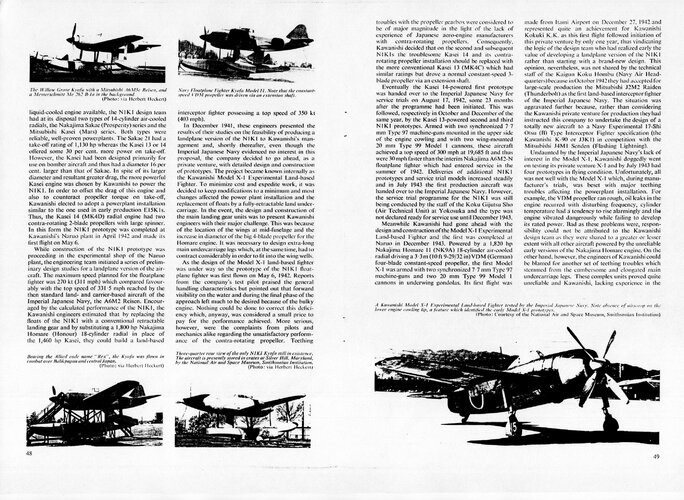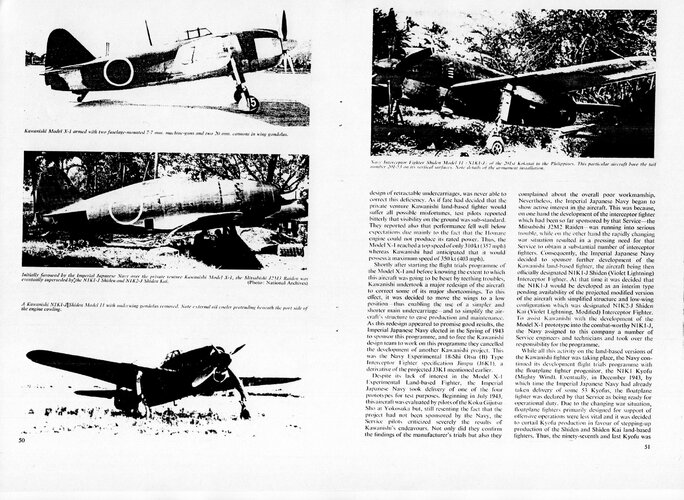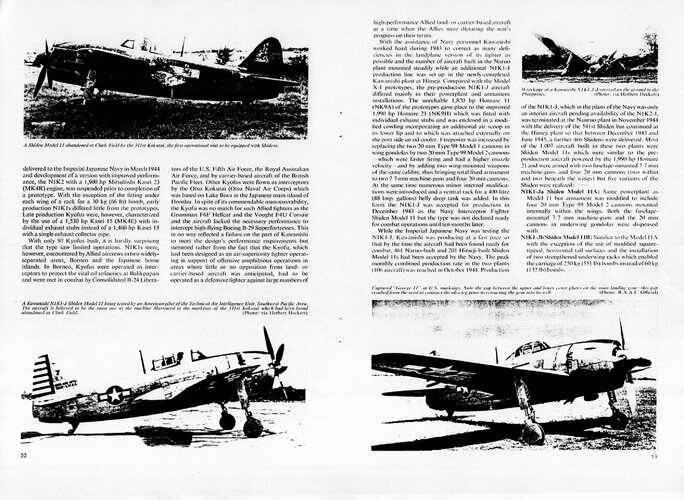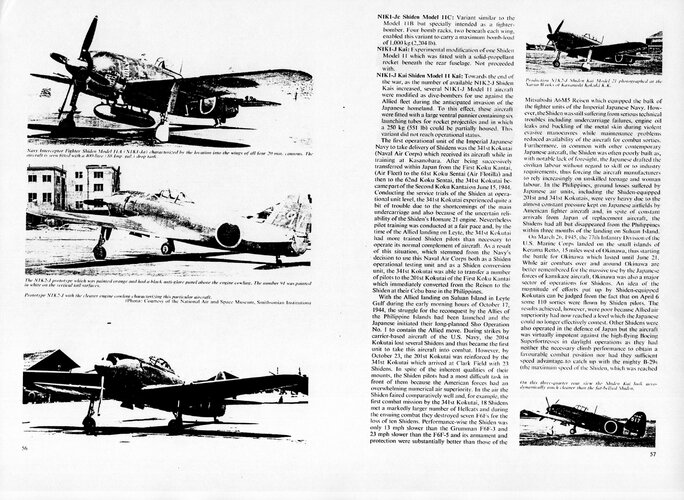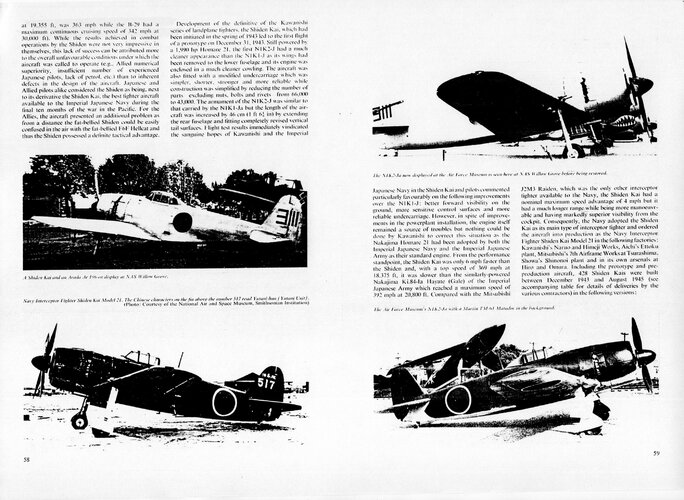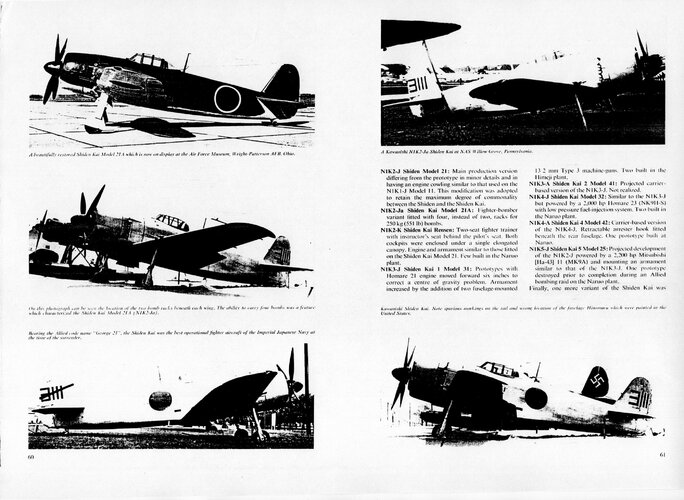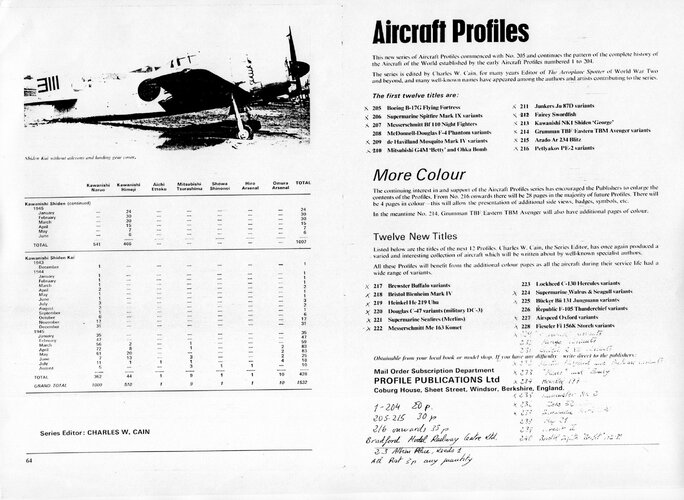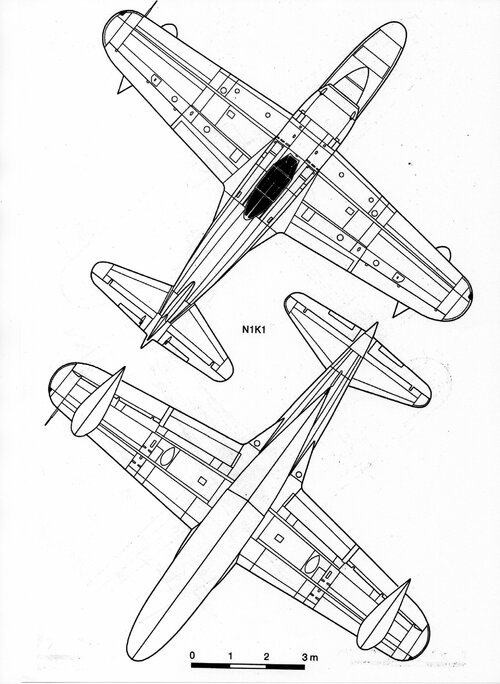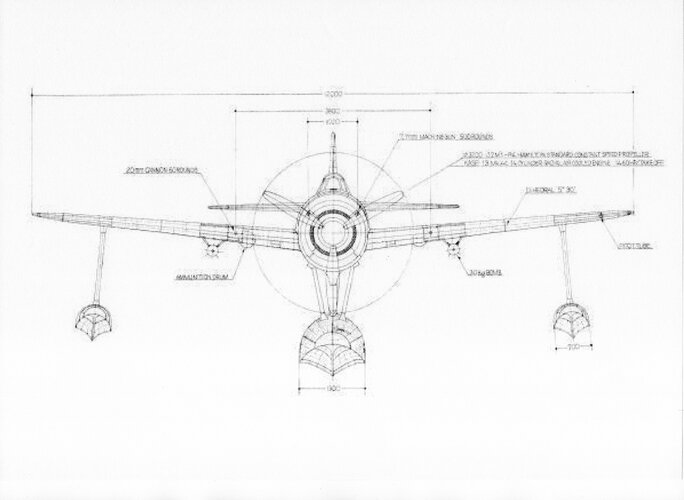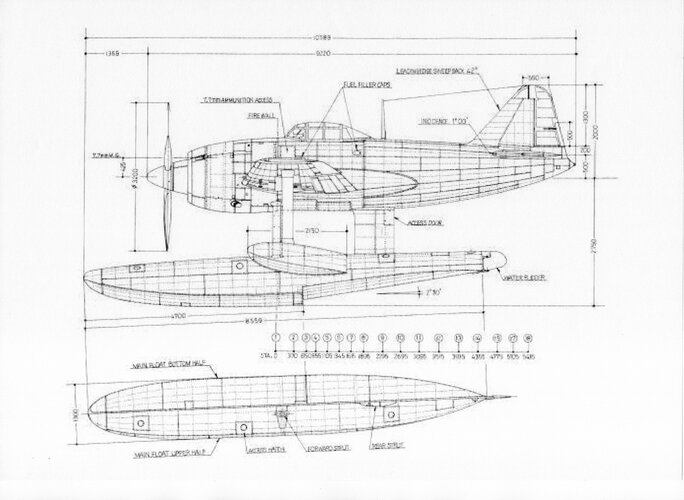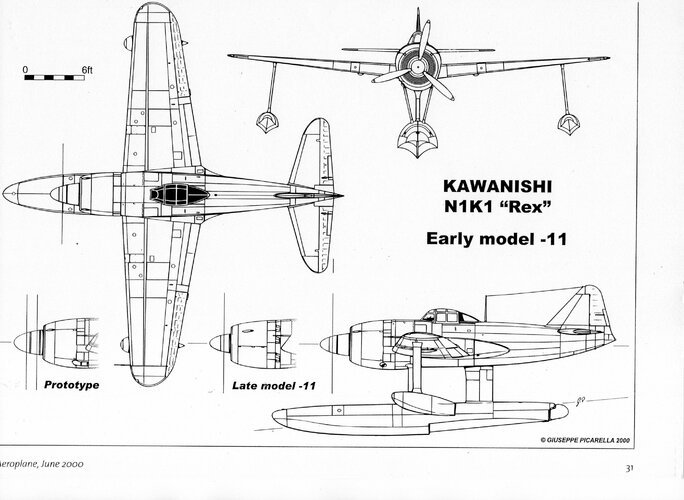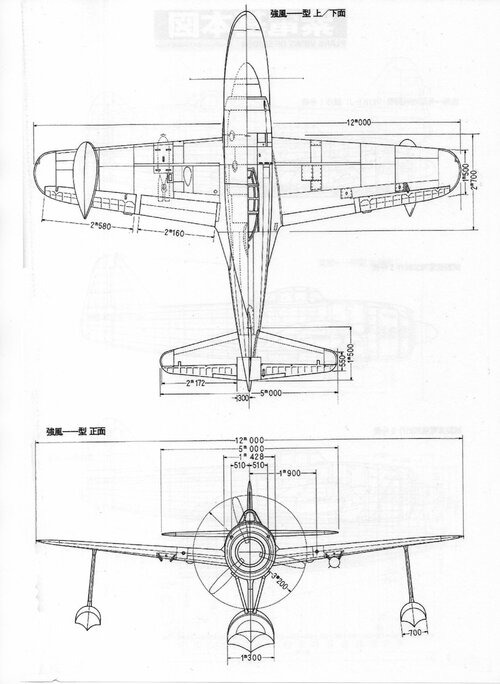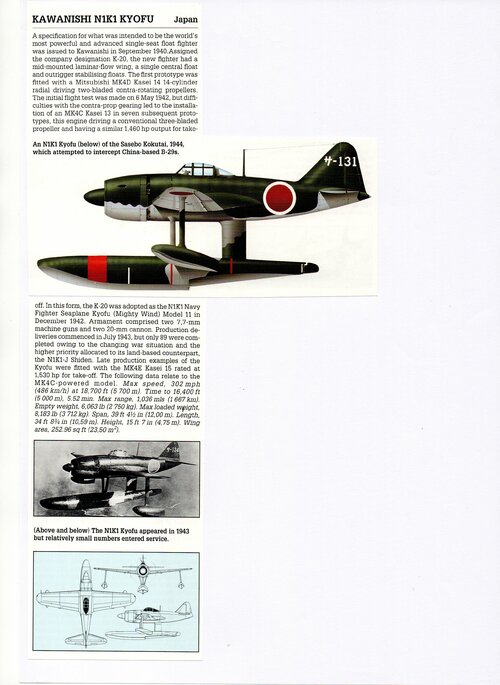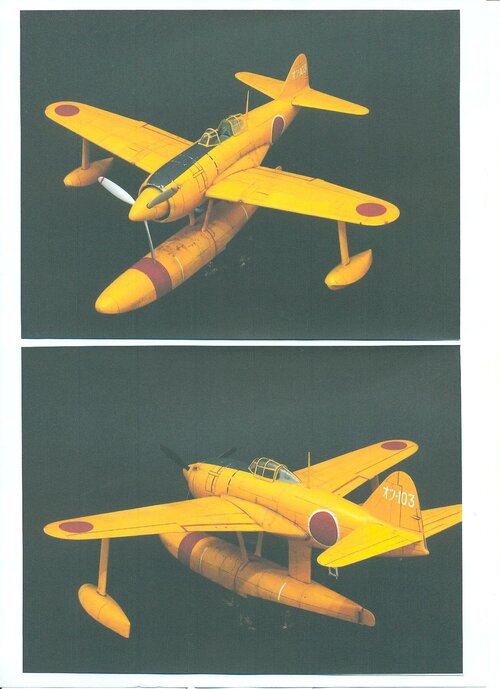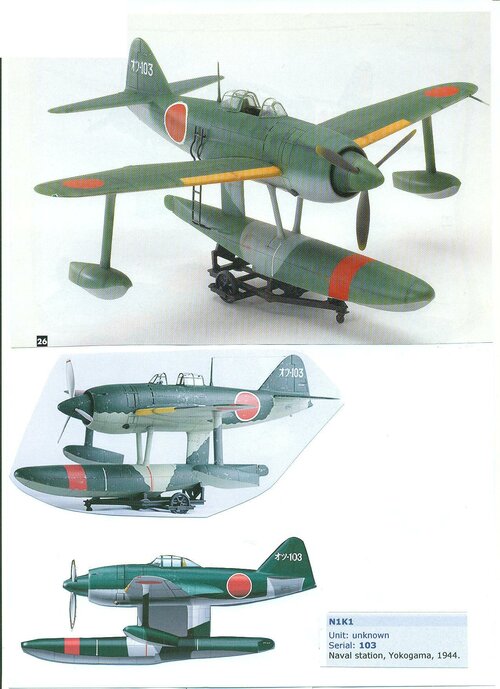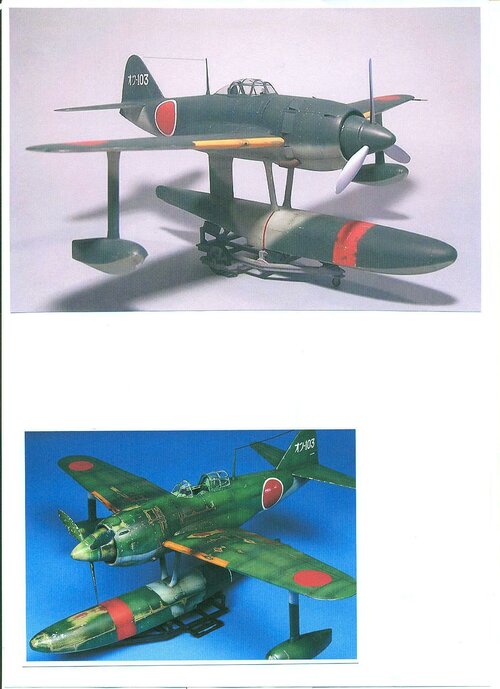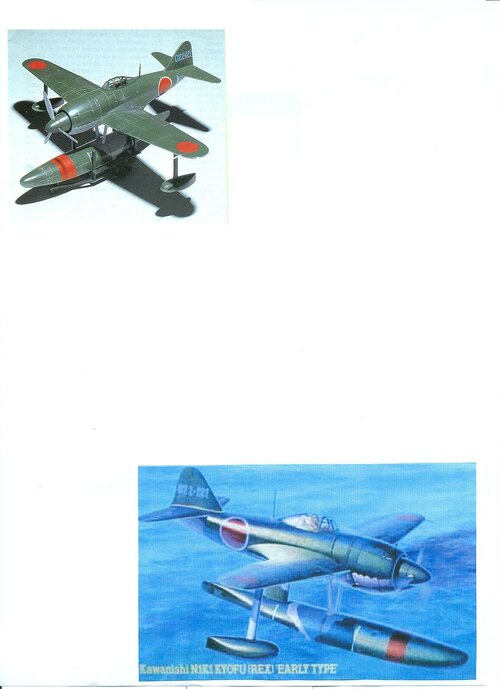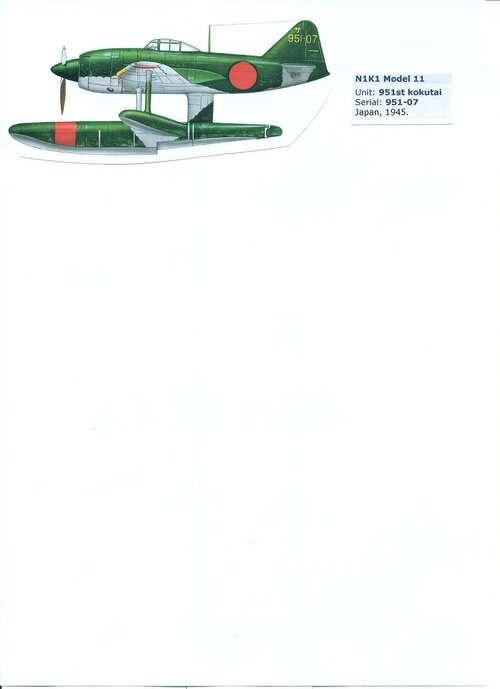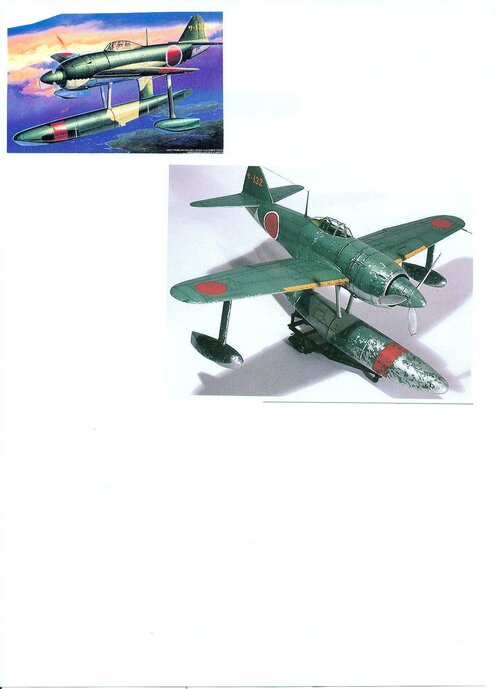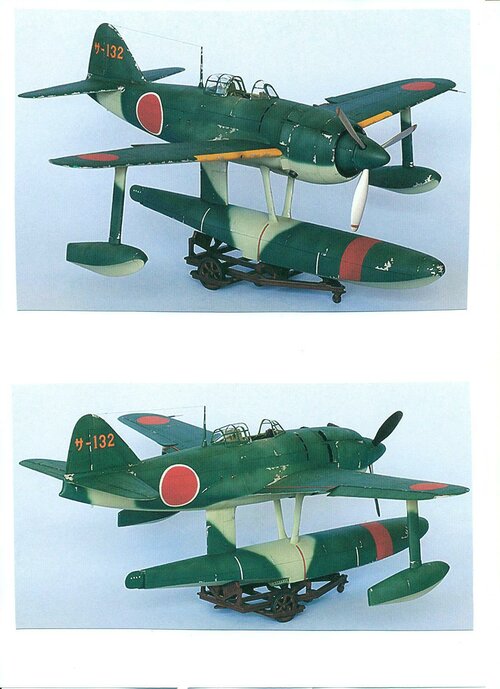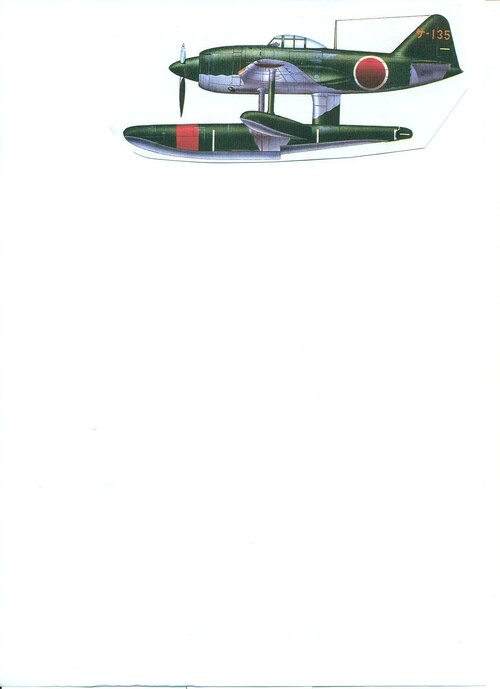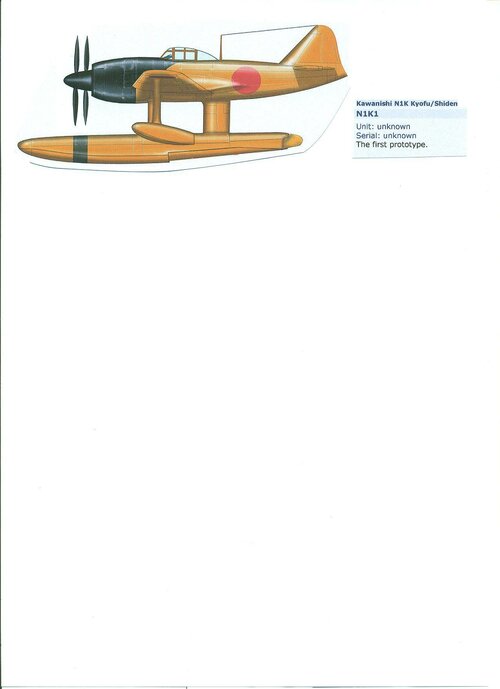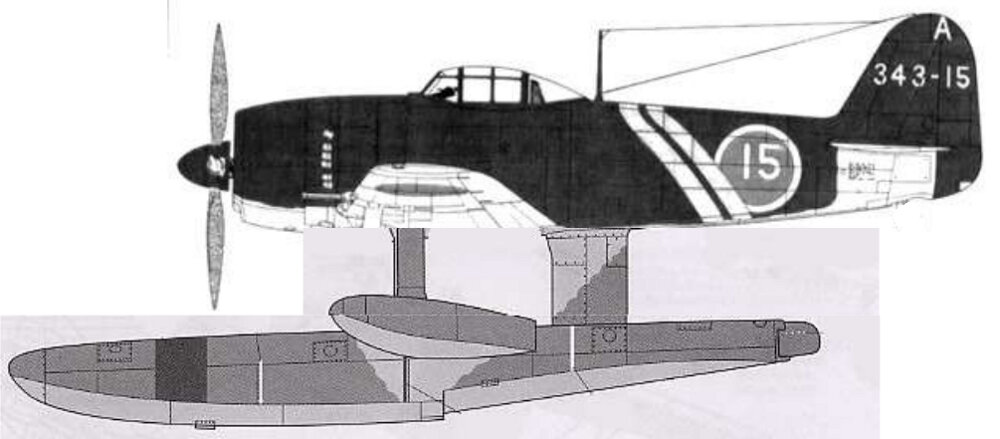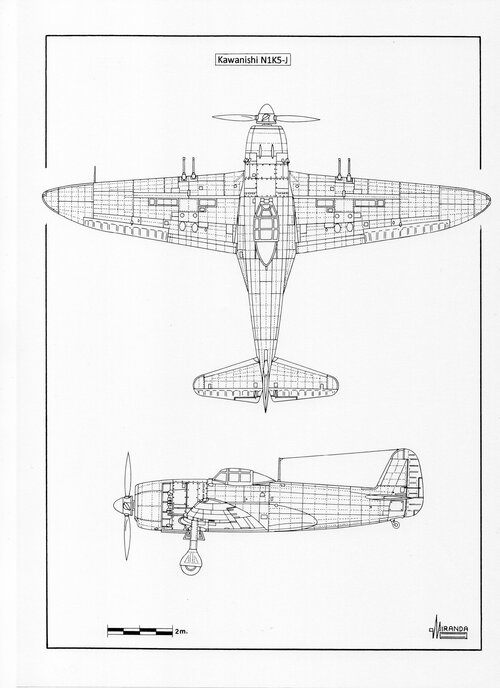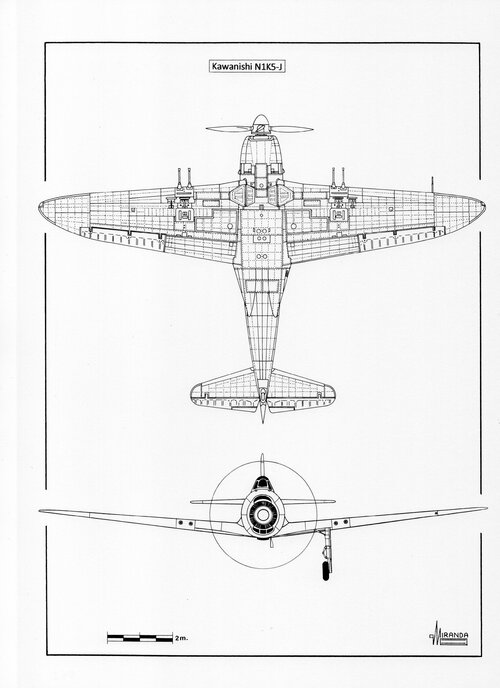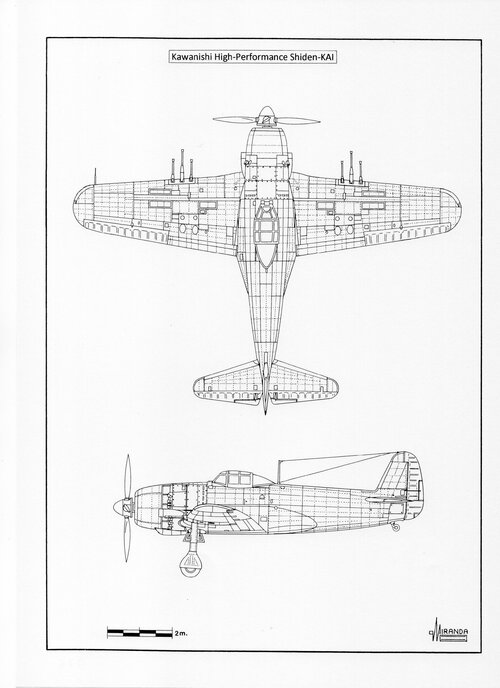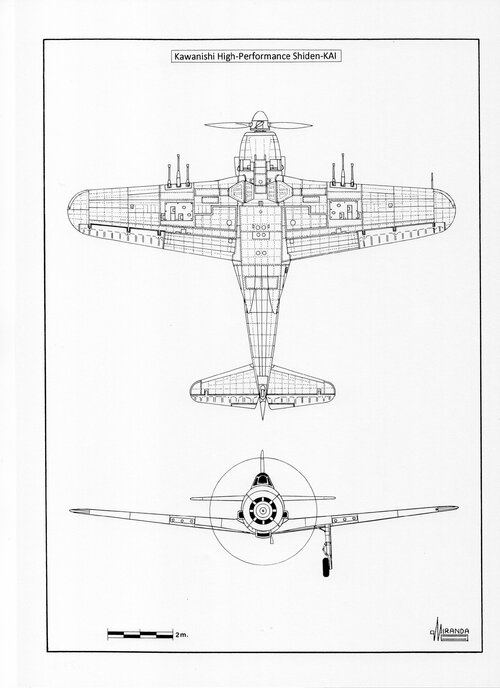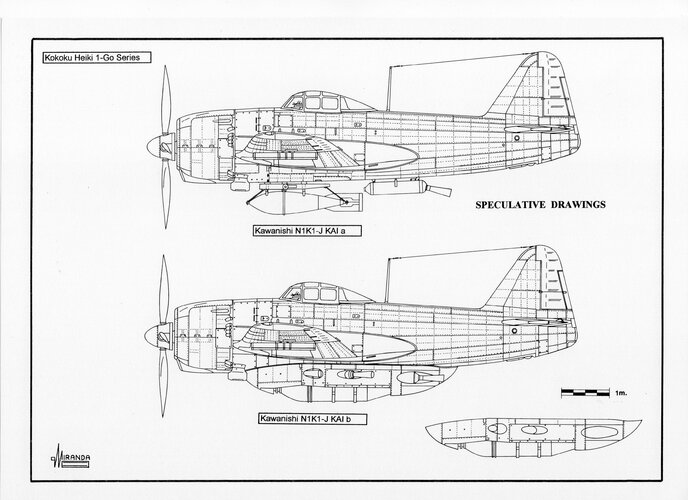Kawanishi N1K1-J Shiden
With a mid-mounted wing and laminar flow aerofoil, the
Shiden was designed at the end of 1941 to replace the
Zero as standard carrier-based fighter of the IJN.
The choice was based on the mid-wing designs of the American naval fighters
Wildcat and
Buffalo that, at that time, looked better equipped to operate from aircraft carriers. The
Shiden also considerably improved the roll rate compared to other low-wing designs.
However, while the American airplanes had a belly retractable undercarriage, the
Shiden main legs retracted within the wing, as it happened with the
Zero. This solution was to be problematic because the structure of the wing – originally designed for a floatplane – lacked the resistance to stand the impacts of deck landing.
To solve this issue, the joint of the main legs with the wings had to be positioned near the fuselage and, therefore, the legs were not long enough, and the propeller hit the ground. The Kawanishi designers were specialised in floatplanes and have no experience with retractable undercarriages; hence they tried to solve this problem with telescopic legs of great mechanical complexity, like those of the P-47 American fighter. When the
Shiden was operational in February 1944, Japan had lost most of their aircraft carriers and almost all its naval pilots with experience on deck landing.
The airplanes of the IJN continued to operate from the ground bases, but the airdromes conditions were quite poor. A stripe of pounded earth and a few hastily built sheds on a remote tropical island were incompatible with the sophisticated mechanics of the
Shiden.
The first airplanes of the 401st. Kokutai arrived at the Takao (Formosa) airdrome on August 31, 1944. Their mission was to intercept the B-29 airplanes based in Chengdu (China) on their route to Japan. The operation was a failure. Despite themselves, the Japanese pilots discovered that their maximum speed at an altitude of 6,000 m was almost the same than the cruising speed of the B-29 at 9,000 m. They simply could not intercept them. When the alarm was sounded with advance enough, the
Shiden tried to climb up to 9,500 m to perform just one frontal attack, facing the intense fire of dozens of the B-29 heavy machine guns. Besides, they could not afford the additional weight of an extra detachable fuel tank and had just fuel enough to return to base.
Another unpleasant surprise revealed the low performance of the brakes, something that should not be extremely important over aircraft carriers although it was vital in an earth stripe under rain. To stop the airplane the pilots acquired the habit of getting out of the landing strip, to brake over the loose earth on the sides, with disastrous consequences for the delicate telescopic mechanism of the legs. The efficiency of next take off was seriously hindered as the legs incompletely retracted within its housing under the wing, thus considerably reducing the airplane speed and making of landing a very dangerous exercise.
Engines also failed. Originally designed for the 91-octane fuel available in 1941, they had to work with 87 octanes, or even sometimes mixed with a volatile oil extracted from pine tree roots that lowered the fuel to 85 octane. It was so contaminated with impurities that American Jeeps that used this fuel during occupation suffered engine failures.
The Nakajima NK9H
Homare 21 engine was not easy to start at tropical temperatures and its cowling design was not adequate for efficient refrigeration. During climbing the cowl air control flaps should be fully opened to avoid an excessive heating of the cylinder heads, generating a considerable drag. The
Homare also lost power above 7,000 m at a fast rate; although it has been designed to generate 1,990 hp with 85 octane, it actually was able to only generate 1,800 hp.
The
Shiden was at its most efficient in fighting at medium and low altitude, thanks to its automatic flaps and powerful weapons. It performance equalled that of the
Hellcat and
Thunderbolt airplanes, being slightly below the
Mustang and
Corsair models.
The
Shiden was however very useful defending the airdromes of Formosa and Luzon against the strafing operations of the American naval fighters. But it was incapable to defend its own bases to the south of Kyushu against the B-29 offensive during the spring of 1945.
During the last days of December 1944, the 402nd Kokutai, based in Marcott (Luzon) was converted into a suicide unit to perform attacks against US landings on Mindoro Island. By the beginning of January, the Squadron received 12
Shiden of the N1K1-Jb model that were able to transport two bombs of 250 kg under the wings and one 400 litres detachable fuel tank under the fuselage. On January 2, when they were ready for take-off, they suffered an attack by P-47 airplanes destroying eight
Shiden. The four remaining machines were used to perform raids against Allied ships in the Lingayen Gulf during the following days.
Meanwhile, the technicians of the Yokosuka naval test centre had reached the conclusion that neither the Kawanishi N1K1-J
Shiden nor the Mitsubishi J2 M3
Raiden were right to fight against the B-29 airplanes. They recommended the manufacturing of the N1K2-J
Shiden KAI, an improved version of the
Shiden, as a land based standard fighter for the IJN. It was a painful decision, considering that there were over 1,000 units of
Shiden and 566 of
Raiden already manufactured.
By August 1944 both models, together with the Yokosuka D4Y
Suisei, the Nakajima B6N
Tenzan and the Aichi B7A
Ryusei, were allocated to the
Kokoku Heiki Go.1 programme of reforms that had the objective to optimize the design of these airplanes for kamikaze missions. They installed supports for the new RATO rockets, developed by the IJN for take off from their light aircraft carriers, and one bomb of 500 to 800 kg.
The N1K1-J KAI-Ko was the first modified version of the
Shiden. It had a Toku-Ro.1 Type 2 rocket, with 600 kg peak thrust and 30 seconds of life, under the rear (strengthened) fuselage. Its objective was to help the airplane taking off from short airstrips when heavily loaded. Another addition was the installation of a launch device for one anti-ship bomb Number 50 model 2 of 507 kg under the central section of the fuselage.
The concept seemed outdated in 1945 and it was considered to provide the
Shiden with the new rocket booster package developed by Kugisho. Aerodynamically adapted to the
Shiden belly, it contained four Toku-Ro.1 Type 1 rockets with 600 kg peak thrust and 10 seconds of life, two Toku-Ro.1 Type 2 rockets and a Number 80 Model 2 anti-ship bomb, fixed and without any tailfin.
The two Type 2 rockets were used in RATO configuration during take off while the two central Type 1 rockets were used to gain speed when confronting the defence fighters of the US Fleet. The two forward Type 1 served to provide a 60 km speed increase during the terminal dive over the Allied ships, thus reducing the time of exposure to the 40 mm Antiaircraft Artillery.
The 20 mm guns were removed from the ‘KAI-Otsu’ to reduce weight, leaving the two type 97 machine guns of 7.7 mm that were installed behind the engine as the only armament to defend from the Allied fighters. It had been ascertained that the
kamikaze pilot could better estimate distances and angles for an optimal impact if the tracer bullets were shot during the terminal dive.
By the end of 1944, both the conventional and suicide version of the
Suisei started to use I.S.R. type rockets of 12 cm to distort the aiming of the AA Allied gunners during the terminal dive. These rockets had been originally developed for Antiaircraft Artillery usage, with incendiary pellets and shrapnel warhead, in imitation of the German
Föhn. They could be mass shot from a square matrix or one by one from iron tubes similar to the German W.Gr 21. The
Suisei carried two or four tubes under the wings, something that was generalized for all the airplanes of the
Kokoku Heiki Go.1.
Four
Shiden had been already modified by the end of the war, but they were preserved to counteract the invasion of Kyushu and never went into operation.
Kawanishi N1K2-J Shiden KAI
Designed in the spring of 1943 to succeed the
Shiden, the Kawanishi N1K2-J
Shiden KAI was its simplified version with a more reliable and similarly powerful engine that was 222 kg lighter. A total number of 23.000 parts were removed and it had a lower wing and simpler undercarriage.
These changes improved the chances to compete against the B-29 airplanes, although its armament of four 20 mm guns was somehow insufficient to destroy these gigantic machines. Thanks to the use of Type 3 Number 6 Mark 27 Model 1, with 60 kg rocket bombs - launched from rails installed under the wings - but also through ramming attacks, the
Shiden KAI was able to shoot down some of the
Superfortress.
On 7 April the B-29 42-63512 was rammed over Tokyo by a KAI of the 301
st Kokutai. Between 18 April 18 and 11 May 1945 the
Shiden KAIs of the 343
rd Kokutai performed 120 interception operations against the B-29 that were striking the
kamikaze bases of Oita, Tachiarai, Kanoya and Chiran, to the South of Kyushu. On April 22, two KAIs of the 407
th Kokutai shot the belly of an unidentified B-29 at 8,000 m over Kanoya. The bomb bay exploded as a result and the three airplanes were destroyed.
On 5 May two B-29 bombers, with numbers 42-65305 and 44-69899, were shot down by
Shiden KAIs of the 343
rd Kokutai over Oita, one by the rocket-bombs and the other by ramming. On May 7, the 42-63549 and the 44-69887 B-29 were also destroyed over the same place and following same pattern of attack.
During the combats of these days, three KAIs of the 343
rd Kokutai were shot down by the machine guns of the B-29 bombers, seven by forced landing and fifteen by bombing. At medium altitude fighting, the KAI was more efficient than the
Shiden, a serious opponent to the Mustang under 4,000 m and to the Corsair at low level. On June 22, 1945 one KAI of the 343
rd Kokutai rammed the
Corsair FG-1D BuNo.88441 in a fight over Amami Oshima.
A total of just 428
Shiden KAIs were manufactured to be used by the elite units. The
KAI was too valuable to be used in suicide missions, but during the Okinawa battle the IJN lost 29 aircrafts against the U.S. Navy fighters while escorting
kamikaze groups.
By mid-1943, the effective blockade by the U.S. Navy Submarine Force began to strangle the Japanese economy and the aeronautical industry was particularly affected by increasing shortages of high aviation fuel and light alloys. On 8 September, Nakajima, Tachikawa and Mansyu were instructed by the IJA to use wood and steel as aluminium substitutes in the manufacture of the
Hayate fighter.
In the version Ki.113, designed in the fall of 1944, Nakajima used steel in as many sub-assemblies as possible, but the excessive weight of the new airframe caused the abandoning of the project after the completion of the prototype early in 1945. Kawanishi proposed the construction of the N1K5-J, a steel version of the
Shiden-KAI with 13.92 m extended wingspan, powered by one Mk 9A engine, but the project was dismissed because of excessive weight.






























![[10]kyoufu@2@.jpg](/data/attachments/283/283266-8f3c77072a335fbb50b616d7972ac907.jpg)
![[10]kyoufu@3@.jpg](/data/attachments/283/283267-098c3b1648ef13adac0c9a695f43a2b8.jpg)
![[10]kyoufu@4@.jpg](/data/attachments/283/283268-a9064ca214ac976f9e5d55e1a549f1d8.jpg)
![[10]kyoufu@5@.jpg](/data/attachments/283/283269-c33af5a40aa1539dc7d1218d1c802d02.jpg)
![[10]kyoufu@6@.jpg](/data/attachments/283/283270-f77fa6a896571e7b0f479c7c866abceb.jpg)
![[10]kyoufu@7@.jpg](/data/attachments/283/283271-4596fbafe0360e50aa7df6b2d2952c5a.jpg)

